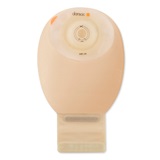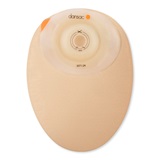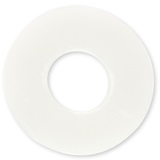6 Tips to Preventing Peristomal Skin Problems
Ideally, your peristomal skin should be healthy, but issues can occur. Fortunately, there are several steps you can take to prevent them.

Learn how to avoid peristomal skin problems.
When you experience an issue with the skin around your stoma (also known as a peristomal skin complication or PSC), it can vary from mild discomfort to a major problem. There are several common causes of PSCs, but the good news is there are ways to avoid PSCs.
Explore these 6 tips to keeping your peristomal skin healthy:
Key #1: Take peristomal skin health seriously
If your peristomal skin is irritated or damaged, it can be uncomfortable or painful. In addition, peristomal skin issues can weaken the ability of your skin barrier to stay in place and your ostomy pouching system to be secure. That’s why taking care of this skin is so important. Some quick tips to consider:
- Follow the skin care guidelines recommended by your stoma care nurse
- Basic is best when it comes to cleaning your peristomal skin – water is often the best option
- Stay away from lotions and creams that can contain residue, and films that may weaken skin barrier adhesion
Key #2: Use a skin barrier or seal with skin-protective properties
Skin-friendly skin barriers and seals can support healthy skin around your stoma. Fortunately, there are advanced products designed to:
- Help absorb excess moisture without losing internal or external strength to maintain the skin’s natural balance
- Provide secure adhesion yet be easy to remove and gentle to the skin
- Help maintain the pH balance of naturally healthy skin. Click here to learn about Dansac’s skin-friendly products.
Key #3: Regularly change your pouch
To avoid leakage, change your pouch at regular intervals, as directed by your stoma care nurse. Also, try to avoid overfilling or overweighting your pouch. This can cause a lot of stress on your ostomy pouching system, which may cause a leak. If you’re unsure of how often you should change your pouch, work with your stoma care nurse to determine the right frequency.
Key #4: If you experience itching, replace your pouch
There are several causes of peristomal itching. For example, it can be a result of a fungal skin infection called candidiasis. Warm and moist conditions or leakage can cause candidiasis. An allergic reaction or irritant can also cause itching. Chemicals in products like lotions and soaps can irritate the skin.
The good news is that, in a survey of people with a stoma, 79 percent of respondents said that simply changing their pouch improved the itching. However, if you experience consistent or severe itching and a pouch change doesn’t make the situation better, contact your stoma care nurse.
Key #5: Be gentle with skin barrier removal
If you remove your skin barrier too roughly, it may tear or damage your peristomal skin. If done repeatedly, further damage can cause leakage. Here are a few quick tips to follow when removing your skin barrier:
- Don’t be rushed when taking off your skin barrier. Allow enough time to remove it gently.
- Slowly remove the barrier away from your peristomal skin
- Start at the top and work down
- Press gently against the surrounding skin as you work your way down
Key #6: Work with your stoma care nurse to find the right products
Your stoma care nurse will know about the latest research and products that can help you care for your peristomal skin. Your stoma care nurse can help you determine the right product selection to keep your unique peristomal skin healthy.
- 2 Shares
- 200 Recommended





